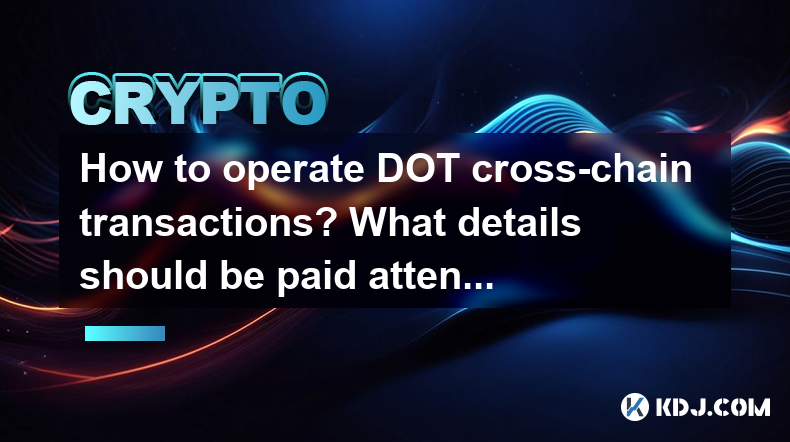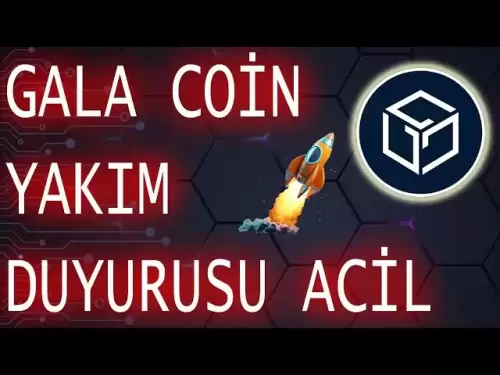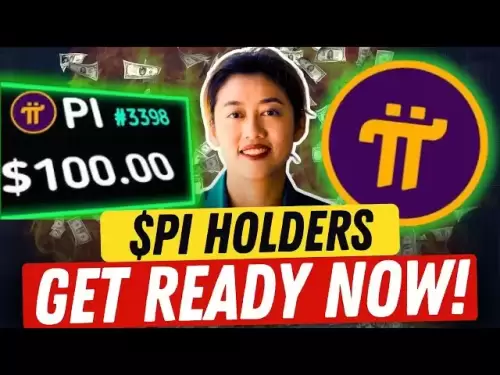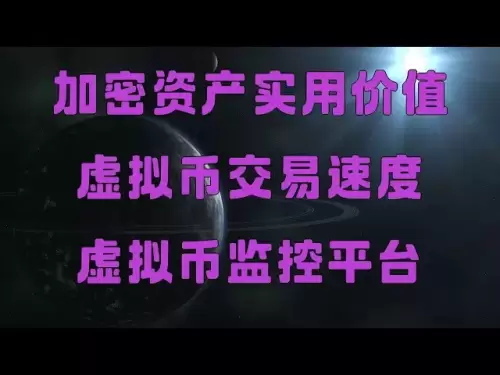-
 Bitcoin
Bitcoin $106,731.2224
-1.05% -
 Ethereum
Ethereum $2,444.9804
-1.20% -
 Tether USDt
Tether USDt $1.0003
0.01% -
 XRP
XRP $2.1882
0.09% -
 BNB
BNB $651.1435
-0.61% -
 Solana
Solana $148.3252
-2.09% -
 USDC
USDC $1.0000
0.01% -
 TRON
TRON $0.2787
0.55% -
 Dogecoin
Dogecoin $0.1598
-3.16% -
 Cardano
Cardano $0.5520
-2.43% -
 Hyperliquid
Hyperliquid $39.0960
-2.64% -
 Bitcoin Cash
Bitcoin Cash $516.9519
2.98% -
 Sui
Sui $2.7011
-2.95% -
 Chainlink
Chainlink $13.0582
-1.71% -
 UNUS SED LEO
UNUS SED LEO $8.9250
-2.53% -
 Stellar
Stellar $0.2359
-0.18% -
 Avalanche
Avalanche $17.3856
-3.73% -
 Toncoin
Toncoin $2.8095
-3.56% -
 Shiba Inu
Shiba Inu $0.0...01121
-1.95% -
 Litecoin
Litecoin $85.2795
-0.85% -
 Hedera
Hedera $0.1471
-2.15% -
 Monero
Monero $319.8004
1.12% -
 Dai
Dai $1.0001
0.01% -
 Ethena USDe
Ethena USDe $1.0001
0.02% -
 Bitget Token
Bitget Token $4.5344
-1.07% -
 Polkadot
Polkadot $3.3224
-2.96% -
 Uniswap
Uniswap $6.9697
-2.75% -
 Aave
Aave $266.1658
-2.25% -
 Pepe
Pepe $0.0...09414
-3.41% -
 Pi
Pi $0.4913
-3.29%
How to operate DOT cross-chain transactions? What details should be paid attention to?
DOT enables seamless cross-chain transactions, allowing assets to move between blockchains; ensure correct recipient addresses and sufficient funds to avoid issues.
May 04, 2025 at 06:22 am

Introduction to DOT Cross-Chain Transactions
DOT, the native cryptocurrency of the Polkadot network, enables users to perform cross-chain transactions, allowing assets to move between different blockchains seamlessly. Understanding how to operate these transactions and the details to pay attention to is crucial for anyone looking to leverage the full potential of the Polkadot ecosystem. This article will guide you through the process of executing DOT cross-chain transactions and highlight the key details you need to be aware of.
Preparing for DOT Cross-Chain Transactions
Before you can start with DOT cross-chain transactions, you need to ensure that you have the necessary tools and knowledge. Here are the steps to prepare:
- Set up a Polkadot-compatible wallet: You will need a wallet that supports Polkadot and its parachains. Popular options include the Polkadot.js extension, which can be added to your browser, or hardware wallets like Ledger and Trezor that support Polkadot.
- Fund your wallet with DOT: Ensure you have enough DOT in your wallet to cover the transaction fees and the amount you wish to transfer.
- Understand the destination chain: Familiarize yourself with the blockchain you are transferring to. Each chain may have different requirements and fees.
Executing a DOT Cross-Chain Transaction
Once you are prepared, you can proceed with the cross-chain transaction. Here is a detailed guide on how to do it:
- Open your Polkadot-compatible wallet: Navigate to the wallet interface where you can manage your DOT.
- Select the 'Transfer' option: Look for the transfer or send option within your wallet. This is usually found under the asset management section.
- Choose the destination chain: Select the blockchain you want to transfer your DOT to. This could be a parachain within the Polkadot ecosystem or another compatible blockchain.
- Enter the recipient address: Input the address on the destination chain where you want to send the DOT. Ensure this address is correct, as transactions are irreversible.
- Specify the amount: Enter the amount of DOT you wish to transfer. Remember to account for any fees that may be required.
- Review and confirm the transaction: Double-check all the details, including the recipient address, the amount, and the destination chain. Once you are satisfied, confirm the transaction.
- Wait for the transaction to complete: Cross-chain transactions may take some time to process due to the need to interact with multiple blockchains. Monitor the transaction status in your wallet or on a blockchain explorer.
Key Details to Pay Attention to in DOT Cross-Chain Transactions
When performing DOT cross-chain transactions, there are several details you should be mindful of to ensure a smooth and secure process:
- Transaction fees: Each blockchain has its own fee structure. Be aware of the fees on both the source and destination chains, as they can impact the total cost of your transaction.
- Address formats: Different blockchains may use different address formats. Ensure that the recipient address is compatible with the destination chain to avoid sending funds to an incorrect address.
- Transaction times: Cross-chain transactions can take longer than standard transactions due to the need to bridge between different networks. Be patient and monitor the transaction status.
- Security: Always use secure and reputable wallets and platforms for your transactions. Be cautious of phishing attempts and ensure you are interacting with legitimate services.
Troubleshooting Common Issues in DOT Cross-Chain Transactions
Even with careful preparation, you may encounter issues during your DOT cross-chain transactions. Here are some common problems and how to address them:
- Transaction stuck: If your transaction appears to be stuck, check the status on a blockchain explorer. Sometimes, transactions can take longer than expected due to network congestion.
- Incorrect recipient address: If you accidentally send DOT to an incorrect address, unfortunately, there is little that can be done as blockchain transactions are irreversible. Always double-check the recipient address before confirming the transaction.
- Insufficient funds: Ensure you have enough DOT to cover both the transaction amount and the fees. If you encounter an error due to insufficient funds, you will need to add more DOT to your wallet.
Verifying the Success of Your DOT Cross-Chain Transaction
After completing a DOT cross-chain transaction, it is important to verify its success. Here are the steps to do so:
- Check the transaction status in your wallet: Most wallets will provide a status update on your transaction, indicating whether it has been completed successfully.
- Use a blockchain explorer: Visit a blockchain explorer for both the source and destination chains to confirm that the transaction has been processed and the funds have been transferred.
- Contact the recipient: If you are sending DOT to another person, confirm with them that they have received the funds in their wallet on the destination chain.
Frequently Asked Questions
Q: Can I reverse a DOT cross-chain transaction if I make a mistake?
A: No, blockchain transactions, including DOT cross-chain transactions, are irreversible. It is crucial to double-check all details before confirming a transaction.
Q: Are there any limits on the amount of DOT I can transfer in a cross-chain transaction?
A: The limits depend on the specific chains involved in the transaction. Some chains may have minimum or maximum transfer limits, so it is important to check the requirements of both the source and destination chains.
Q: How can I minimize the fees associated with DOT cross-chain transactions?
A: To minimize fees, you can monitor the network conditions and perform transactions during times of lower congestion. Additionally, some wallets and platforms may offer more competitive fee structures, so it is worth comparing different options.
Q: What should I do if my DOT cross-chain transaction fails?
A: If your transaction fails, first check the transaction status on a blockchain explorer to understand the reason for the failure. If the issue is due to insufficient funds, add more DOT to your wallet. For other issues, you may need to contact the support team of the wallet or platform you are using.
Disclaimer:info@kdj.com
The information provided is not trading advice. kdj.com does not assume any responsibility for any investments made based on the information provided in this article. Cryptocurrencies are highly volatile and it is highly recommended that you invest with caution after thorough research!
If you believe that the content used on this website infringes your copyright, please contact us immediately (info@kdj.com) and we will delete it promptly.
- Tether, Bitcoin, and the Public Listing Frenzy: A New Era for Corporate Crypto?
- 2025-07-02 04:30:12
- Token Yugijo, Coin Flips & Meme Coins: What's Hot?
- 2025-07-02 04:30:12
- Powell, Stablecoin Regulation, and Circle's Bold Move: A New York Minute on Crypto's Future
- 2025-07-02 02:30:12
- Ethereum Price, Tom Lee, and Bitcoin: A New Era for Crypto?
- 2025-07-02 02:30:12
- Hoskinson, Ripple, Cardano DeFi: A New Era of Collaboration?
- 2025-07-02 02:35:12
- BlockDAG, ALGO, and the Crypto Trends Shaping 2025
- 2025-07-02 01:50:12
Related knowledge

How to customize USDT TRC20 mining fees? Flexible adjustment tutorial
Jun 13,2025 at 01:42am
Understanding USDT TRC20 Mining FeesMining fees on the TRON (TRC20) network are essential for processing transactions. Unlike Bitcoin or Ethereum, where miners directly validate transactions, TRON uses a delegated proof-of-stake (DPoS) mechanism. However, users still need to pay bandwidth and energy fees, which are collectively referred to as 'mining fe...

USDT TRC20 transaction is stuck? Solution summary
Jun 14,2025 at 11:15pm
Understanding USDT TRC20 TransactionsWhen users mention that a USDT TRC20 transaction is stuck, they typically refer to a situation where the transfer of Tether (USDT) on the TRON blockchain has not been confirmed for an extended period. This issue may arise due to various reasons such as network congestion, insufficient transaction fees, or wallet-rela...

How to cancel USDT TRC20 unconfirmed transactions? Operation guide
Jun 13,2025 at 11:01pm
Understanding USDT TRC20 Unconfirmed TransactionsWhen dealing with USDT TRC20 transactions, it’s crucial to understand what an unconfirmed transaction means. An unconfirmed transaction is one that has been broadcasted to the blockchain network but hasn’t yet been included in a block. This typically occurs due to low transaction fees or network congestio...

How to check USDT TRC20 balance? Introduction to multiple query methods
Jun 21,2025 at 02:42am
Understanding USDT TRC20 and Its ImportanceUSDT (Tether) is one of the most widely used stablecoins in the cryptocurrency market. It exists on multiple blockchain networks, including TRC20, which operates on the Tron (TRX) network. Checking your USDT TRC20 balance accurately is crucial for users who hold or transact with this asset. Whether you're sendi...

What to do if USDT TRC20 transfers are congested? Speed up trading skills
Jun 13,2025 at 09:56am
Understanding USDT TRC20 Transfer CongestionWhen transferring USDT TRC20, users may occasionally experience delays or congestion. This typically occurs due to network overload on the TRON blockchain, which hosts the TRC20 version of Tether. Unlike the ERC20 variant (which runs on Ethereum), TRC20 transactions are generally faster and cheaper, but during...

The relationship between USDT TRC20 and TRON chain: technical background analysis
Jun 12,2025 at 01:28pm
What is USDT TRC20?USDT TRC20 refers to the Tether (USDT) token issued on the TRON blockchain using the TRC-20 standard. Unlike the more commonly known ERC-20 version of USDT (which runs on Ethereum), the TRC-20 variant leverages the TRON network's infrastructure for faster and cheaper transactions. The emergence of this version came as part of Tether’s...

How to customize USDT TRC20 mining fees? Flexible adjustment tutorial
Jun 13,2025 at 01:42am
Understanding USDT TRC20 Mining FeesMining fees on the TRON (TRC20) network are essential for processing transactions. Unlike Bitcoin or Ethereum, where miners directly validate transactions, TRON uses a delegated proof-of-stake (DPoS) mechanism. However, users still need to pay bandwidth and energy fees, which are collectively referred to as 'mining fe...

USDT TRC20 transaction is stuck? Solution summary
Jun 14,2025 at 11:15pm
Understanding USDT TRC20 TransactionsWhen users mention that a USDT TRC20 transaction is stuck, they typically refer to a situation where the transfer of Tether (USDT) on the TRON blockchain has not been confirmed for an extended period. This issue may arise due to various reasons such as network congestion, insufficient transaction fees, or wallet-rela...

How to cancel USDT TRC20 unconfirmed transactions? Operation guide
Jun 13,2025 at 11:01pm
Understanding USDT TRC20 Unconfirmed TransactionsWhen dealing with USDT TRC20 transactions, it’s crucial to understand what an unconfirmed transaction means. An unconfirmed transaction is one that has been broadcasted to the blockchain network but hasn’t yet been included in a block. This typically occurs due to low transaction fees or network congestio...

How to check USDT TRC20 balance? Introduction to multiple query methods
Jun 21,2025 at 02:42am
Understanding USDT TRC20 and Its ImportanceUSDT (Tether) is one of the most widely used stablecoins in the cryptocurrency market. It exists on multiple blockchain networks, including TRC20, which operates on the Tron (TRX) network. Checking your USDT TRC20 balance accurately is crucial for users who hold or transact with this asset. Whether you're sendi...

What to do if USDT TRC20 transfers are congested? Speed up trading skills
Jun 13,2025 at 09:56am
Understanding USDT TRC20 Transfer CongestionWhen transferring USDT TRC20, users may occasionally experience delays or congestion. This typically occurs due to network overload on the TRON blockchain, which hosts the TRC20 version of Tether. Unlike the ERC20 variant (which runs on Ethereum), TRC20 transactions are generally faster and cheaper, but during...

The relationship between USDT TRC20 and TRON chain: technical background analysis
Jun 12,2025 at 01:28pm
What is USDT TRC20?USDT TRC20 refers to the Tether (USDT) token issued on the TRON blockchain using the TRC-20 standard. Unlike the more commonly known ERC-20 version of USDT (which runs on Ethereum), the TRC-20 variant leverages the TRON network's infrastructure for faster and cheaper transactions. The emergence of this version came as part of Tether’s...
See all articles

























































































